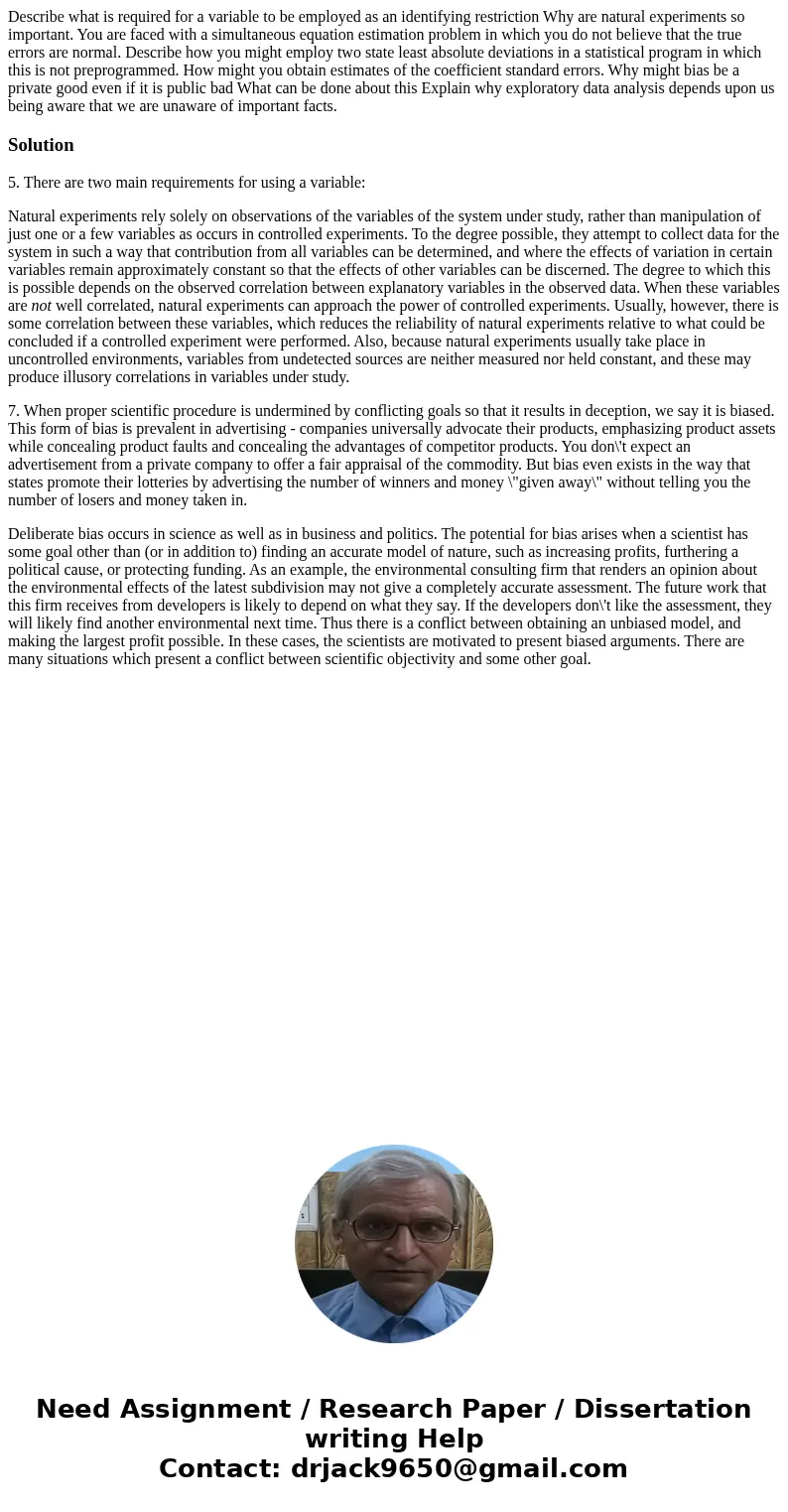Describe what is required for a variable to be employed as a
Solution
5. There are two main requirements for using a variable:
Natural experiments rely solely on observations of the variables of the system under study, rather than manipulation of just one or a few variables as occurs in controlled experiments. To the degree possible, they attempt to collect data for the system in such a way that contribution from all variables can be determined, and where the effects of variation in certain variables remain approximately constant so that the effects of other variables can be discerned. The degree to which this is possible depends on the observed correlation between explanatory variables in the observed data. When these variables are not well correlated, natural experiments can approach the power of controlled experiments. Usually, however, there is some correlation between these variables, which reduces the reliability of natural experiments relative to what could be concluded if a controlled experiment were performed. Also, because natural experiments usually take place in uncontrolled environments, variables from undetected sources are neither measured nor held constant, and these may produce illusory correlations in variables under study.
7. When proper scientific procedure is undermined by conflicting goals so that it results in deception, we say it is biased. This form of bias is prevalent in advertising - companies universally advocate their products, emphasizing product assets while concealing product faults and concealing the advantages of competitor products. You don\'t expect an advertisement from a private company to offer a fair appraisal of the commodity. But bias even exists in the way that states promote their lotteries by advertising the number of winners and money \"given away\" without telling you the number of losers and money taken in.
Deliberate bias occurs in science as well as in business and politics. The potential for bias arises when a scientist has some goal other than (or in addition to) finding an accurate model of nature, such as increasing profits, furthering a political cause, or protecting funding. As an example, the environmental consulting firm that renders an opinion about the environmental effects of the latest subdivision may not give a completely accurate assessment. The future work that this firm receives from developers is likely to depend on what they say. If the developers don\'t like the assessment, they will likely find another environmental next time. Thus there is a conflict between obtaining an unbiased model, and making the largest profit possible. In these cases, the scientists are motivated to present biased arguments. There are many situations which present a conflict between scientific objectivity and some other goal.

 Homework Sourse
Homework Sourse